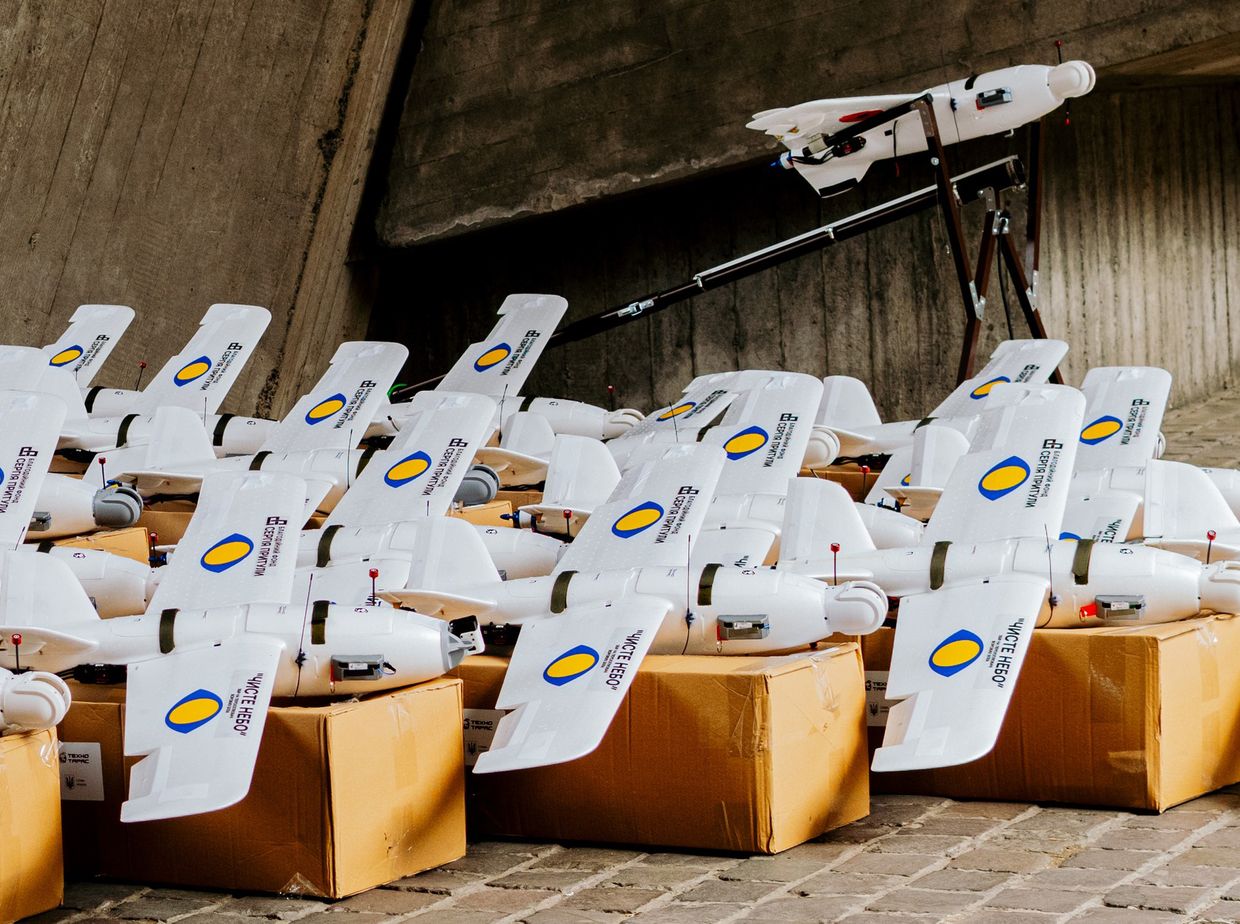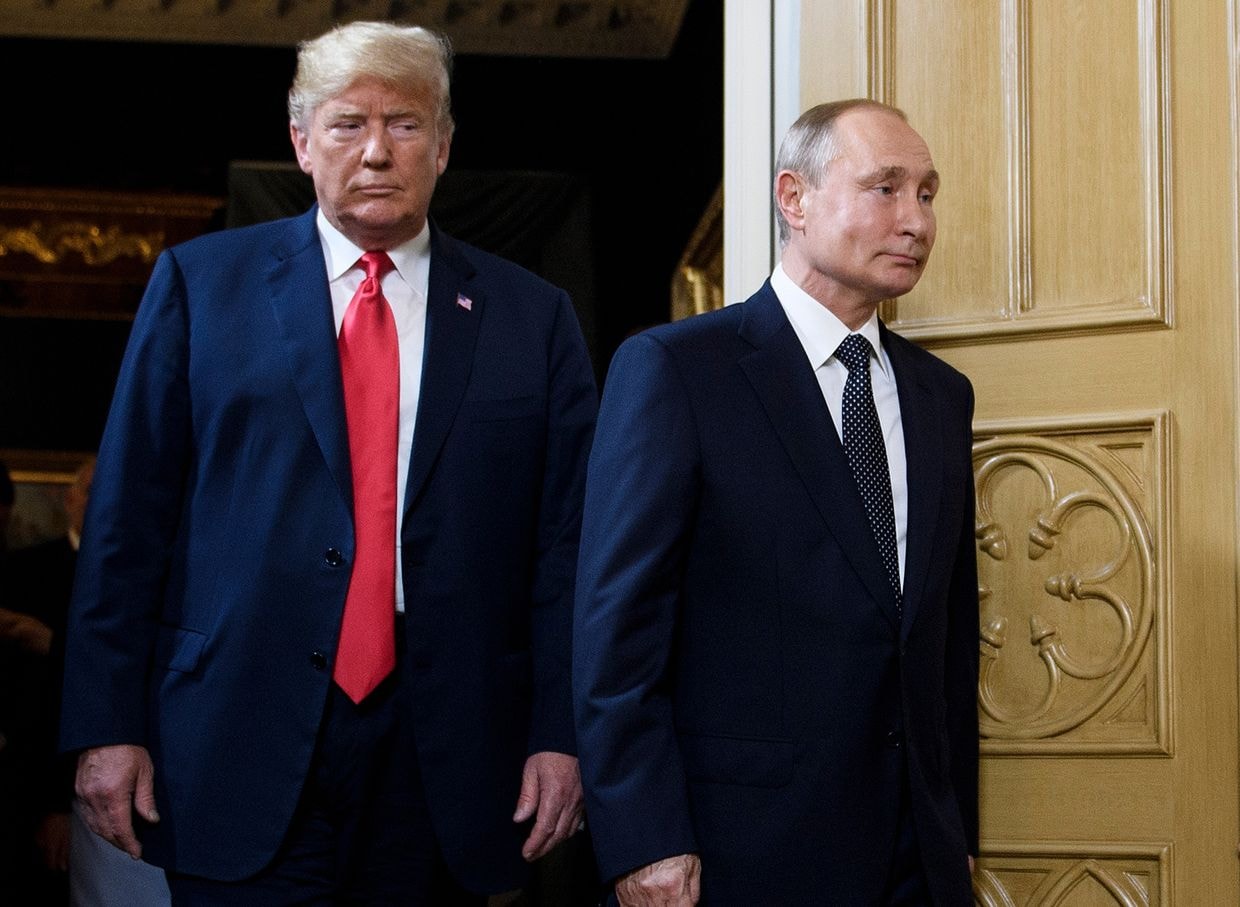
Russia increasingly targets Ukraine's cities with cluster munitions, raising civilian toll
Ukrainian emergency workers search through rubble at the site of a missile attack in Sumy, Ukraine, on April 14, 2025. (Roman Pilipey / AFP via Getty Images)
Amid stalled peace talks, Russia is increasingly attacking Ukrainian cities with cluster munitions, banned by international organizations for the indiscriminate damage they cause to civilians.
The civilian casualty toll in Ukraine in 2025 rose by 37% compared with the same period last year, mostly due to Russia’s use of long-range explosive weapons — including cluster munitions — in densely populated cities, the UN said.
Cluster munitions are a type of weapon that scatter small explosive bomblets across a large impact area, designed to inflict maximum injuries to people.
While Ukraine has used cluster munitions provided by the United States on the battlefield since 2022, Russia uses them far more often and strikes civilian areas, experts told the Kyiv Independent.
"The vast majority of cluster munitions that are being used in the world today are being used by Russia in Ukraine," said Mary Wareham, deputy director of the Crisis, Conflict, and Arms Division at Human Rights Watch.
Their use "is an element of Moscow’s broader policy of terror against the Ukrainian people," Ukraine’s Foreign Ministry said on June 26.
Recent attacks on civilians
Ukrainian authorities have documented at least 5,974 cases of Russia’s cluster munitions use in Ukraine since 2022, the Foreign Ministry said.
When such attacks are launched on big cities, like Russia’s strike on Kyiv on June 17 that killed 30 and injured 172 people, they stand out for the number of civilian casualties inflicted. According to Wareham, videos from the attack site suggest the use of cluster munitions delivered by a cruise missile.
Ukrainian authorities said that Russia also used cluster munitions in a strike on a playground in Kryvyi Rih on April 4, killing 20 people, including nine children, in the deadliest single attack on Ukrainian children verified by the UN since the start of the full-scale invasion.
“The biggest issues are the lack of air defense batteries coupled with the lack of interceptors from the Ukrainian side.”
The UN’s report on June 30 described "no indication of any military presence at the site" of the attack after the Russian Defense Ministry claimed it was targeting military personnel at the restaurant. The report did not include the Kryvyi Rih attack in the list of strikes with the use of cluster munitions.


In another attack, two ballistic missiles struck the center of Sumy minutes apart on Sunday afternoon of April 13, during a religious holiday. Thirty-five people were killed and 117 injured, "mainly civilians who were walking on the street or traveling on a bus, and people attempting to help the victims of the first strike," the UN report said.
Other deadly strikes on civilians with cluster munitions were reported by local Ukrainian authorities in the past few months, including the attack on Kharkiv on April 18, Chuhuiv in Kharkiv Oblast on May 23, a village in Sumy Oblast on May 26, and a UN-documented attack in Dobropillia that killed 11 people and injured 48 on March 7.
Ukrainian defenses
Russia’s use of cluster munitions is not new, but their delivery methods are evolving to better bypass Ukrainian air defenses protecting big cities.
Their most common use is in artillery rounds, but they can also be carried in ballistic and cruise missiles that Russia routinely launches on Ukrainian cities, along with hundreds of drones.
Though Ukraine has gotten immensely better in intercepting Russian cruise missiles and drones since 2022, the scale of recent Russian attacks is overwhelming Ukrainian air defense. In an attack on June 17, Russia used 440 drones and 32 missiles, including a Kh-69 cruise missile that dispersed cluster munitions in Kyiv, the Foreign Ministry said.

"The biggest issues are the lack of air defense batteries coupled with the lack of interceptors from the Ukrainian side," said Dr. Marina Miron, a post-doctoral researcher at the War Studies Department at King's College London.
"As the Russian side uses decoys and electronic warfare (in the attacks), this in sum creates a huge issue for Ukraine trying to defend against incoming missiles and drones," Miron told the Kyiv Independent.
Miron added that drones carrying explosive payload, such as Iranian Shahed-136 and their Russian analogue Geran-2, could also potentially carry cluster munitions.
Why are cluster munitions banned internationally?
Cluster munitions indiscriminately kill or maim civilians caught in wide areas of impact at the time of the attack, experts say. A large percentage of bomblets also fail to detonate after scattering and could claim people’s lives decades after active fighting ends.
An international treaty called the Convention on Cluster Munitions was established in 2008 with the aim of moving the world away from their use. Since then, 124 countries have signed the treaty, but in 2024, Lithuania withdrew from it, citing the threat from Russia's use of cluster munitions in a potential war with NATO. Neither Russia nor Ukraine nor the U.S. are signatories.

Ukraine has used U.S.-provided cluster munitions against Russian troops in operations like its successful Kharkiv counteroffensive in 2022. Outgunned and outnumbered, Ukraine asked the U.S. for cluster munitions to help liberate Russian-controlled territories.
Based on photographic evidence, the recent UN report suggested Ukraine could also be using cluster munitions in Russian-occupied civilian areas, but data is hard to gather as Russia consistently prevents the UN from independently monitoring attacks and human rights violations in occupied territories.
"Cluster munitions just cross a really big line, and should never be used by any actor under any circumstances, in a city or anywhere else," Wareham said.
Note from the author:
Hello, this is Natalia Yermak, the author of this story. As I wrote about cluster munitions, I learned that many international organizations can't investigate every attack independently, so they rely on media reports to keep track of human rights violations, such as wide-range strikes on civilians.
If you’d like to support our work reporting on those attacks, please consider becoming our member.










